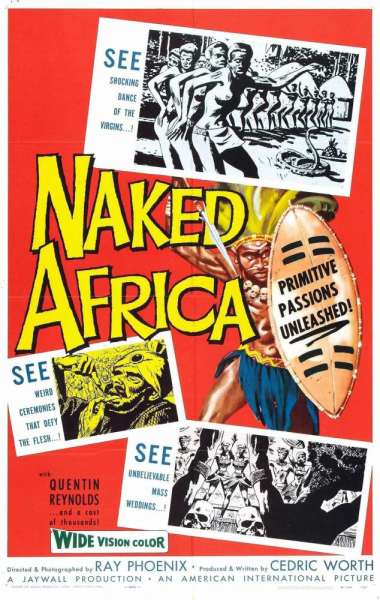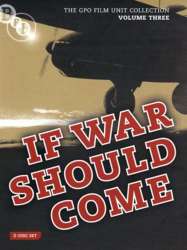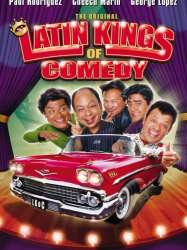Naked Africa is a american film of genre Documentary released in USA on 1 august 1957 with Quentin Reynolds
Naked Africa (1957)

If you like this film, let us know!
- Infos
- Casting
- Technical infos
- Photos
- Videos
- Film quotes
- Characters
- Music
- Awards
Naked Africa is a 1957 documentary about Africa. It was released on a double bill with White Huntress. The film was later re-rereleased under the title Mondo Africana to exploit the shockumentaries Mondo Cane and Africa Addio.
Actors

Quentin Reynolds
(Narrator (voice))
Comments
Leave comment :
Suggestions of similar film to Naked Africa
There are 4 films with the same actors, 8971 with the same cinematographic genres, to have finally 70 suggestions of similar films.If you liked Naked Africa, you will probably like those similar films :

London Can Take It! (1940)
, 9minutesDirected by Harry Watt, Humphrey Jennings
Origin United-kingdom
Genres War, Documentary
Themes Transport films, Aviation films, Documentary films about war, Documentary films about historical events, Documentary films about cities, Political films, Documentary films about World War II
Actors Quentin Reynolds
Rating69%





The film opens with shots of the London streets in late afternoon, as people begin their commute home. The narrator reminds the audience that these people are part of the greatest civilian army the world has ever known, and are going to join their respective service before London's "nightly visitor" arrives. Listening posts are stationed as far away as the coastline and the "white fingers" of searchlights touch the sky.
 , 1h21
, 1h21Origin USA
Genres Documentary
Themes Documentary films about politics, Political films
Actors Quentin Reynolds
This script must be run from the command line

Christmas Under Fire (1940)
, 10minutesDirected by Harry Watt
Origin United-kingdom
Genres War, Documentary
Themes Christmas films, Transport films, Aviation films, Rail transport films, Political films
Actors Quentin Reynolds
Rating67%





The film shows Christmas 1940, in the middle of the Blitz. Christmas traditions are depicted in juxtaposition with a wartime backdrop: Christmas trees are dug up for air raid shelters; housewives buy food for the Christmas dinner; theatres stage pantomime productions; schoolchildren produce handmade Christmas cards. People are shown celebrating Christmas while sheltering in the London Underground, accompanied by a carol sung by the choir of King's College, Cambridge.
 , 1h27
, 1h27Genres War, Documentary
Themes Films about racism, Films about religion, Documentary films about racism, Documentary films about law, Documentary films about war, Documentary films about historical events, Documentaire sur une personnalité, Documentary films about politics, Documentary films about religion, Political films, Films about Jews and Judaism, Documentary films about World War II
Rating72%






India: Kingdom of the Tiger (2002)
, 42minutesDirected by Bruce Neibaur
Origin Canada
Genres Documentary
Themes Films about animals, Documentary films about nature
Actors Christopher Heyerdahl
Rating60%





The plot is loosely connected to the documental stories published in Jim Corbett's 1944 bestselling book Man-Eaters of Kumaon. Narrator of the film is Jim Corbett. In the film, Corbett, who is portrayed by Christopher Heyerdahl, is asked to kill a man-eating tiger who killed a young woman in Kumaon. Corbett arrives to Kumaon and meets with local people. The sister (Mishra Smriti) of the victim takes Corbett to the killing site. They together ambush the man-eater and Corbett kills the tiger from the machan. During this plot, the narration (by Corbett) contains stories of the history of India and the Kumaon region, as well as the efforts to save Indian tigers.

Je me souviens (2002)
, 47minutesOrigin Canada
Genres Documentary
Themes Films about racism, Documentary films about racism, Documentary films about law, Documentaire sur une personnalité, Documentary films about politics, Political films, Documentary films about Quebec politics

Jim Brown: All-American (2002)
, 2h20Directed by Spike Lee
Origin USA
Genres Biography, Documentary
Themes Sports films, Documentary films about sports, American football films, Documentaire sur une personnalité
Actors Raquel Welch, Oliver Stone, Melvin Van Peebles, Mario Van Peebles, Fred Williamson, Bernie Casey
Rating63%






The Kid Stays in the Picture (2002)
, 1h33Directed by Nanette Burstein, Brett Morgen
Origin USA
Genres Documentary
Themes Documentary films about business, Documentary films about the film industry, Documentaire sur une personnalité
Actors Robert Evans, Eddie Albert, Norma Shearer, Ali MacGraw, Francis Ford Coppola, Catherine Deneuve
Rating72%





The book chronicles Evans' rise from childhood to radio star to film star to production chief of Paramount Pictures to independent producer, his marriage to Ali MacGraw, his downfall including his 1980 cocaine bust and implication in the murder of Roy Radin, aka "The Cotton Club Murder", his banishment from Paramount Pictures, and his return to the studio in the early 1990s.
 , 55minutes
, 55minutesGenres Documentary
Themes Environmental films, Seafaring films, Transport films, Documentary films about business, Documentary films about environmental issues
The area was originally considered worthless by European-Australian settlers, who fenced it off and abandoned it. The town was established around the start of the 20th century by German immigrant settlers. Its population increased after the first and second World Wars due to the government's policies of subsidies to encourage settlement by veterans. The people of Rainbow have struggled to eke out an existence for more than three generations, with global economics and government policy compounding the difficulties of marginal farming. The film draws from home movies from the 1940s to portray the people in this town.
 , 1h26
, 1h26Origin USA
Genres Thriller, Comedy, Documentary
Themes Films about music and musicians, Documentary films about music and musicians, Documentaire sur une personnalité, Musical films
Actors George Lopez, Cheech Marin, Alex Reymundo, Paul Rodriguez
Rating66%





 Connection
Connection